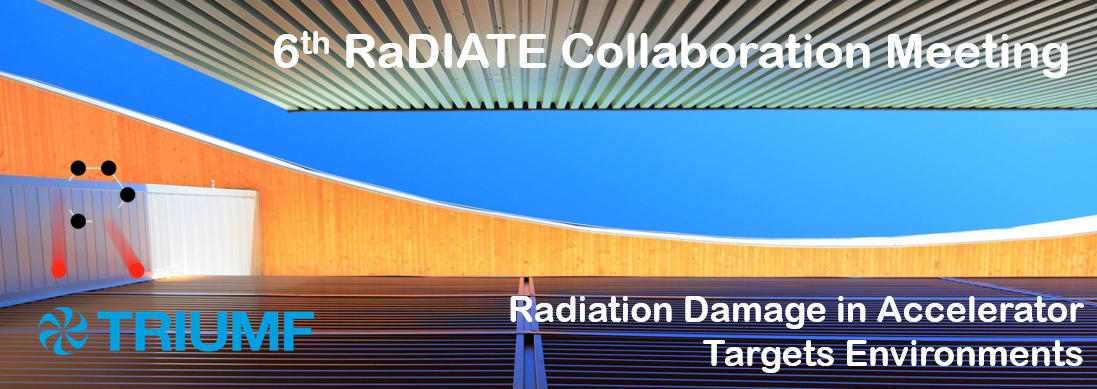Conveners
6th Oral Session: Material Development
- Kavin Ammigan (Fermilab)
Prof.
Mauricio Ponga
(The University of British Columbia)
11/12/2019, 09:00
Oral presentation
Controlling microstructural features in crystalline materials is one of the keys to achieving materials that combine mutually exclusive properties, such as strength and toughness. In this presentation, I will show the efforts made in my group to understand the generation of gradient nano-grained (GNG) structures in metallic materials under several manufacturing methods, including the impact of...
Mr
Shunsuke Makimura
(KEK, J-PARC)
11/12/2019, 09:25
Oral presentation
J-PARC (Japan Proton Accelerator Research Complex) consists of a series of world-class proton accelerators and the experimental facilities that make use of the high-intensity proton beams. Recently, higher intense proton beams are requested due to requirement of further physics research. However, the upgrade of the intensity is dominated by the target technologies.
Tungsten (W) is a principal...
Michael Moorehead
(University of Wisconsin-Madison)
11/12/2019, 09:50
Oral presentation
High-entropy alloys (HEAs) have become the focus of research in many fields often exhibiting unique thermal, mechanical, chemical, and electrical properties. In addition to this, several HEAs have been shown, in both modeling and experiments, to exhibit enhanced resistance to radiation damage. While several theories have been proposed to explain this behavior, often owing to the chemical...
Taku Ishida
(J-PARC)
11/12/2019, 10:15
Oral presentation
An &alpha+&beta dual-phase titanium alloy Ti-6Al-4V (ASTM Grade 5 or its Extra Low Interstitial grade 23) is widely utilized as the beam window material for high-intensity particle accelerators, because of its low density and high specific strength. However, it is known that proton beam irradiation with only 0.1 dpa-NRT rapidly initiates radiation-induced hardening and loss of ductility....

